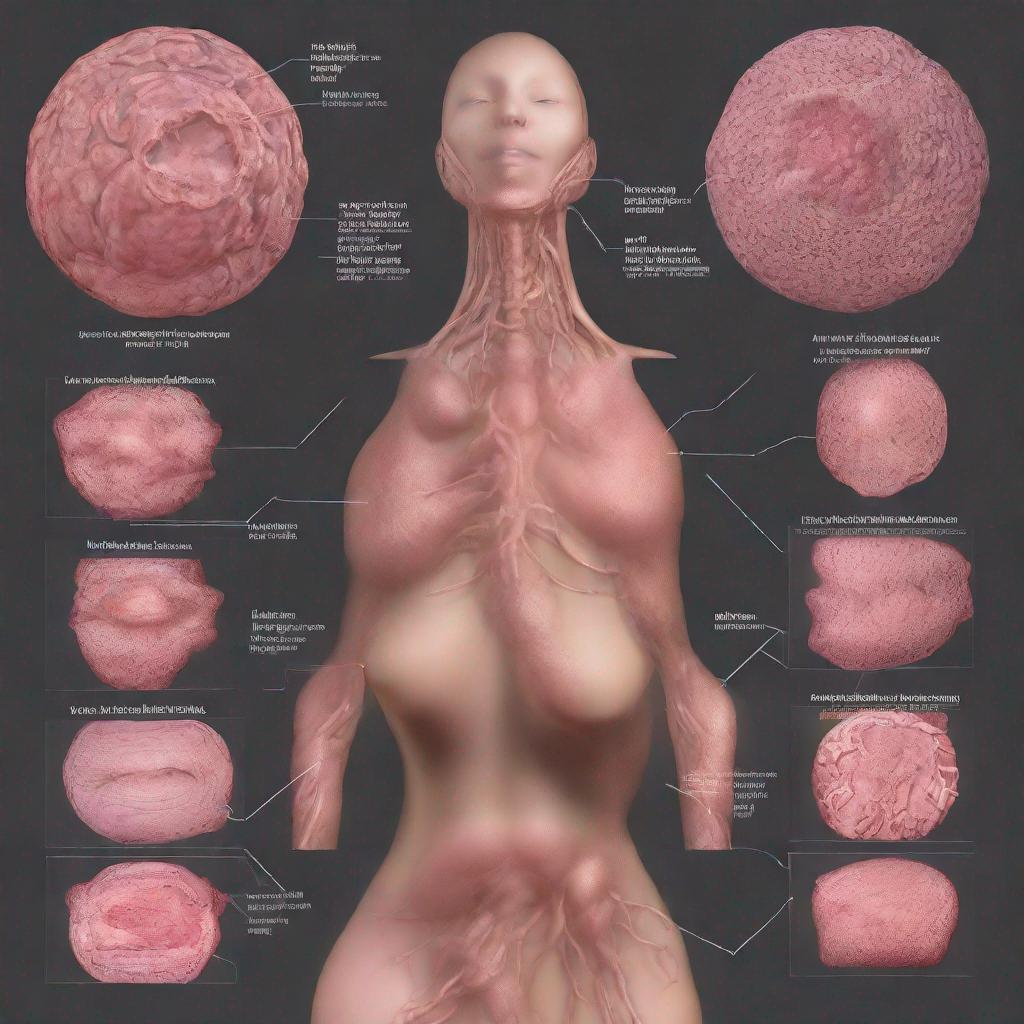## Lymphomas: A Comprehensive Guide
### Introduction
Lymphomas are a group of cancers that originate in the lymphatic system, a network of channels and tissues that runs throughout the body. The lymphatic system plays a crucial role in the body’s immune response, transporting immune cells and filtering out waste products. Lymphomas can affect any part of the lymphatic system, including:
**Body Parts:**
* Lymph nodes
* Lymphatic system
* Spleen
* Thymus
* Bone marrow
**Symptoms:**
Lymphomas can cause a variety of symptoms, including:
* Swollen lymph nodes
* Fever
* Night sweats
* Fatigue
* Weight loss
* Pain or discomfort in the lymph nodes
* Skin rashes or lesions
* Itchy skin
* Shortness of breath
* Chest pain
### Diagnosis
Diagnosing lymphoma involves a physical examination, medical history, and imaging tests. The doctor may also perform the following procedures:
**Procedures:**
* **Biopsy:** Removing a small sample of tissue from a lymph node for examination under a microscope.
* **Lymph node excision:** Surgically removing a lymph node for further examination.
* **Laparoscopy:** Using a small camera to examine the inside of the abdomen.
* **Thoracentesis:** Removing fluid from the chest cavity for examination.
* **Bone marrow aspiration and biopsy:** Removing a sample of bone marrow for examination.
* **PET scan:** Using a radioactive tracer to create images of the body and detect cancerous cells.
* **CT scan:** Using X-rays to create cross-sectional images of the body.
### Types of Lymphomas
There are two main types of lymphomas:
**Conditions:**
* **Hodgkin lymphoma:** Characterized by the presence of Reed-Sternberg cells, a specific type of cell with multiple nuclei.
* **Non-Hodgkin lymphoma:** Comprises several different subtypes, including:
* B-cell lymphoma
* T-cell lymphoma
* Cutaneous lymphoma
* Lymphoblastic lymphoma
* Follicular lymphoma
* Diffuse large B-cell lymphoma
* Mantle cell lymphoma
* Marginal zone lymphoma
### Prevention
While some risk factors for lymphoma cannot be controlled, there are some preventive measures that can be taken:
**Vaccinations:**
* **Epstein-Barr virus vaccine:** Protects against a virus that can increase the risk of certain types of lymphoma.
* **Varicella-zoster virus vaccine:** Protects against chickenpox and shingles, which can also increase the risk of lymphoma.
* **Human papillomavirus vaccine:** Protects against certain types of HPV, which can increase the risk of certain types of lymphoma.
### Treatment
Treatment for lymphoma depends on the type and stage of the cancer. Common treatments include:
**Treatment:**
* **Chemotherapy:** Using drugs to kill cancer cells.
* **Radiation therapy:** Using X-rays or other forms of radiation to kill cancer cells.
* **Targeted therapy:** Using drugs that target specific proteins or molecules involved in cancer growth.
* **Immunotherapy:** Using the body’s own immune system to fight cancer.
* **Stem cell transplant:** Replacing damaged stem cells with healthy stem cells.
* **Surgery:** Surgically removing the cancerous tissue.
### Complications
Lymphomas can lead to several complications, including:
* Infection due to a weakened immune system
* Bone marrow failure
* Secondary cancers
* Infertility
* Lymphedema (swelling of the limbs)
### Conclusion
Lymphomas are a complex group of cancers that require specialized care. By understanding the symptoms, diagnosis, and treatment options, patients can make informed decisions about their healthcare and improve their outcomes. Early detection and prompt treatment are crucial for managing lymphoma effectively.




